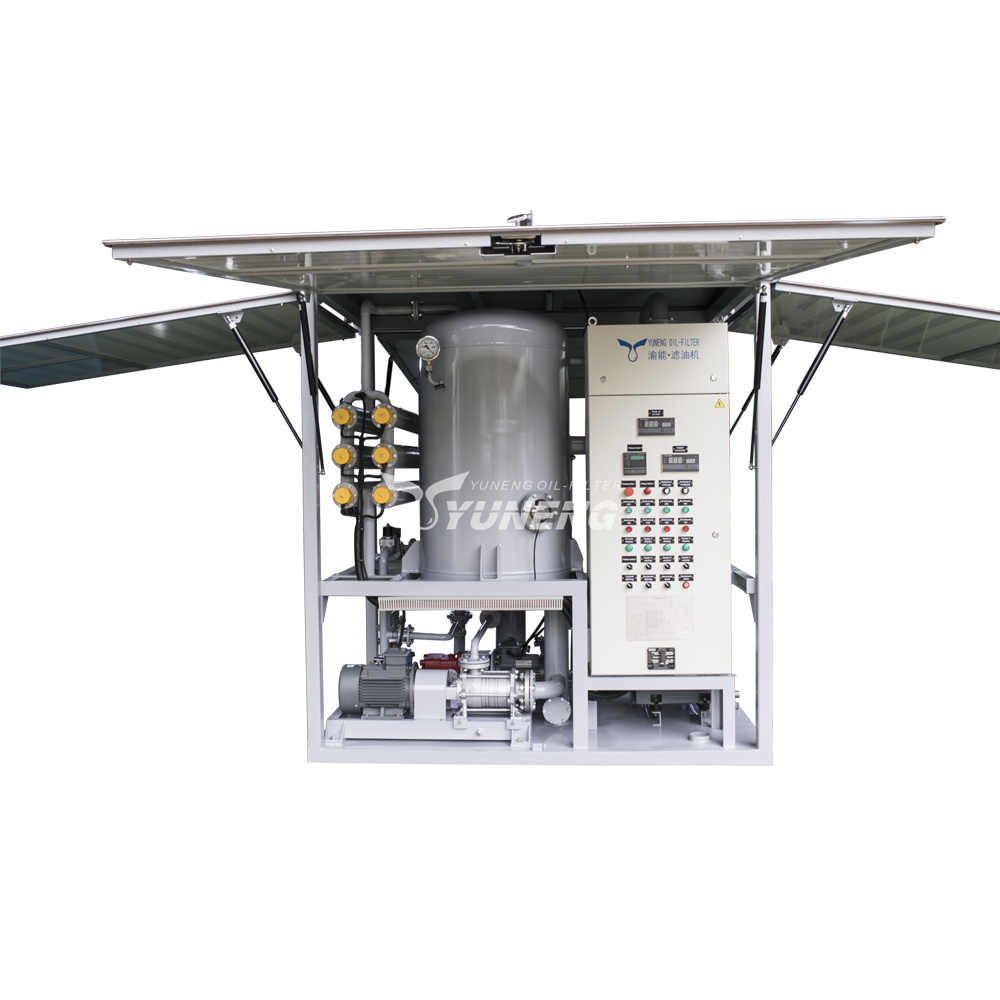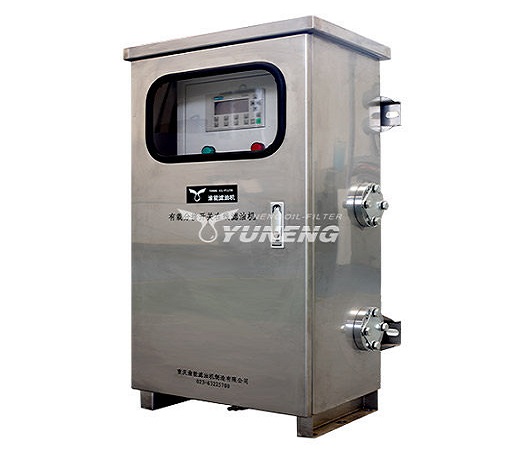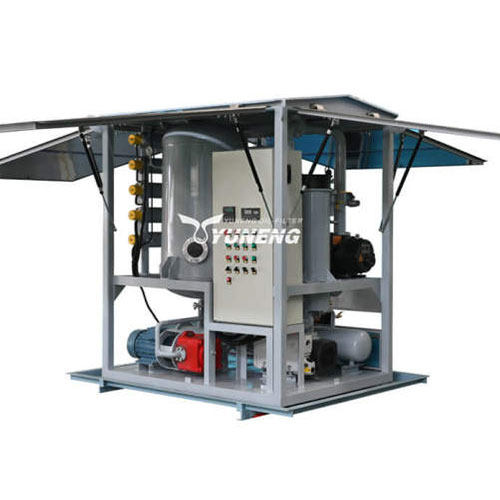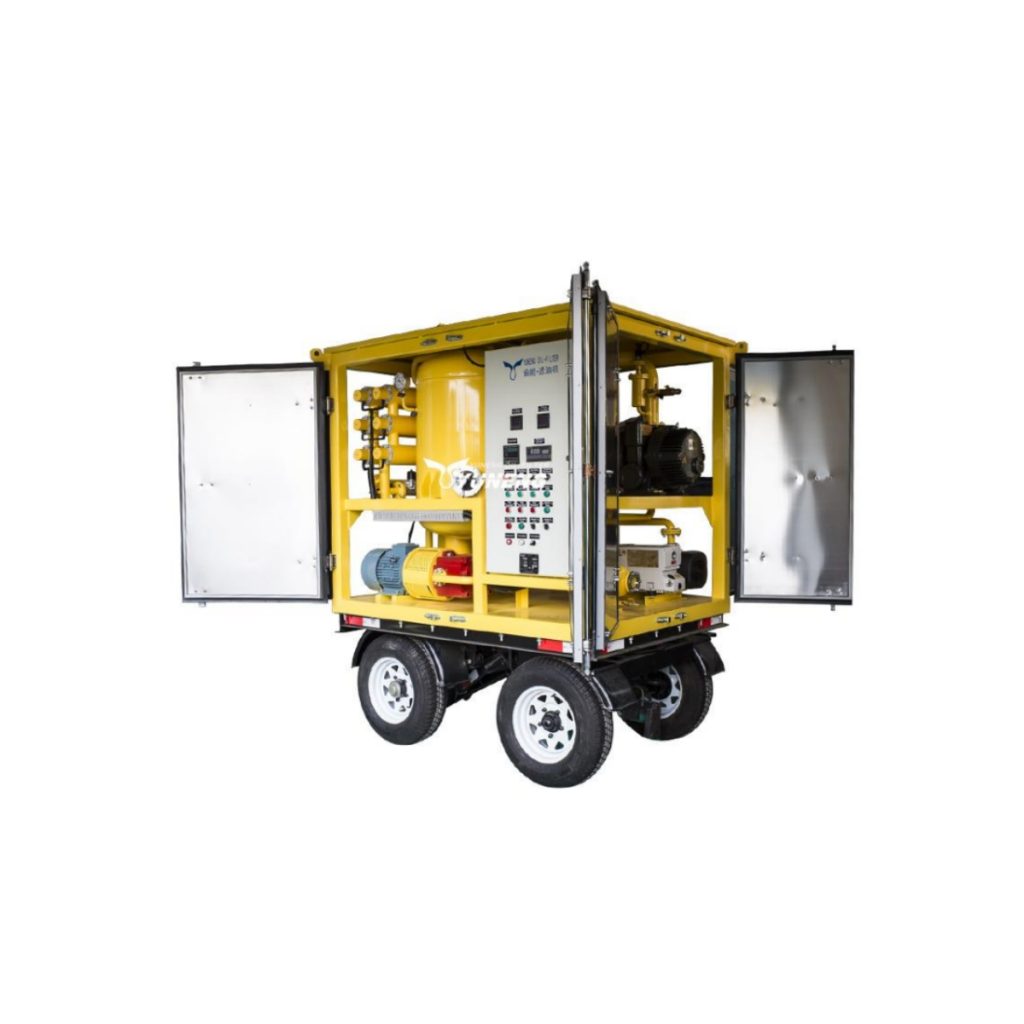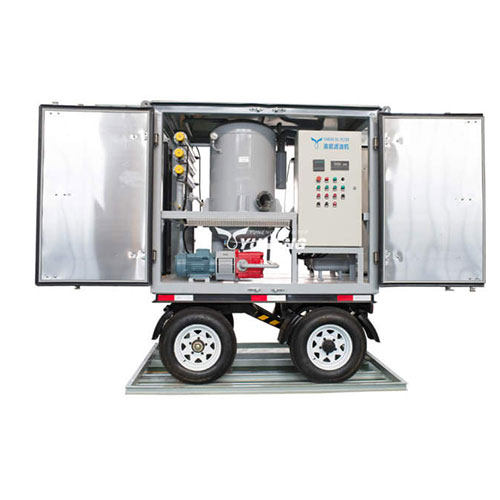How to Determine the Need for Transformer Oil Purification?
Transformer oil serves as an indispensable medium in the operation of electrical equipment, with its performance directly impacting the safety and reliability of transformers. Regular inspection and maintenance of transformer oil are crucial, and among the vital maintenance measures is transformer oil filter purification.
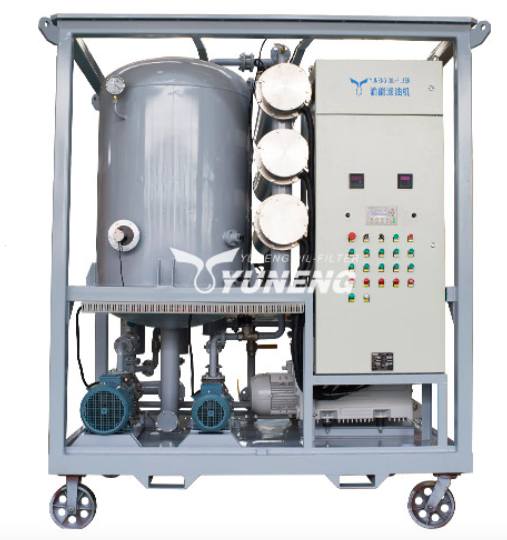
Transformer Oil Testing Indicators and Methods
In order to determine whether transformer oil needs to be filtered, it is necessary to conduct comprehensive testing and analysis of the oil. Commonly used testing indicators and methods include:
1. Visual Inspection
Visual inspection is a fundamental aspect of the regular testing protocol for transformer oil. This procedure involves carefully examining the oil’s appearance to detect any visible anomalies. Experts look for the presence of particulate matter, such as insoluble sludge, fibers, and grit, which can be indicative of contamination. If the oil exhibits an unusual color, such as becoming excessively dark, or if it appears cloudy or contains sediment, these could be signs of moisture ingress or further contamination. Such findings warrant immediate follow-up with additional testing to ascertain the severity of the issue and the subsequent need for remedial action, which might include filtration or even complete oil replacement.
2. Moisture and Acidity
Monitoring the levels of moisture and acidity in transformer oil is crucial because both parameters are strong indicators of the oil’s ability to perform its intended functions over time. Elevated moisture levels can lead to a deterioration of the oil’s insulating properties, making it less effective at preventing electrical arcs and short circuits. Moreover, an increase in acidity is an indication of the oil undergoing oxidation, a process that can lead to the formation of harmful byproducts and the breakdown of the oil’s chemical stability. Therefore, it is standard practice to conduct routine tests to measure the oil’s moisture and acidity content and compare them with established standards. Should the test results show that either parameter exceeds acceptable limits, it would be necessary to implement corrective measures such as filtering the oil to remove excess moisture or acidic components, or, in severe cases, changing the oil entirely to ensure the continued reliability and safety of the transformer’s operation.
3. Interfacial Tension and Dielectric Dissipation Factor
The measurement of interfacial tension and the dielectric dissipation factor provides insight into the overall cleanliness and purity of the transformer oil. A drop in interfacial tension can suggest that there are soluble polar impurities present in the oil, which might be a consequence of previous contamination or chemical reactions within the transformer. Similarly, an uptrend in the dielectric dissipation factor could imply an increase in the number of polar impurities and ionic species, which might reduce the oil’s ability to withstand high voltages without breaking down, thus compromising its insulating properties. Therefore, when these parameters are found to be outside the expected range, it raises a red flag about the oil’s condition. In response, it would be necessary to investigate the root causes of the contamination and decide on the most appropriate course of action, which could range from enhanced filtration to the complete replacement of the oil, depending on the extent and nature of the impairment.
4. Flash Point and Breakdown Voltage
The flash point is a critical safety test, measuring the temperature at which the vapors of the oil spontaneously ignite in the air. A lower flash point indicates that the oil is more prone to catching fire, which is a significant concern for the safe operation of any transformer. On the other hand, the breakdown voltage is a measure of the oil’s ability to resist the passage of an electric current under high-voltage stress. A decline in the breakdown voltage is a sign that the oil may not be able to adequately protect the transformer’s internal components from electrical damage. Therefore, both the flash point and the breakdown voltage of transformer oil must be tested regularly to ensure that they meet or exceed the manufacturer’s specifications and industry standards. If either measurement falls short, it would necessitate prompt action to address the underlying issue, whether it’s through the introduction of flame retardants to raise the flash point or through the addition of special additives to improve the oil’s breakdown voltage, always with the aim of safeguarding the transformer’s integrity and ensuring the continuity of its service.
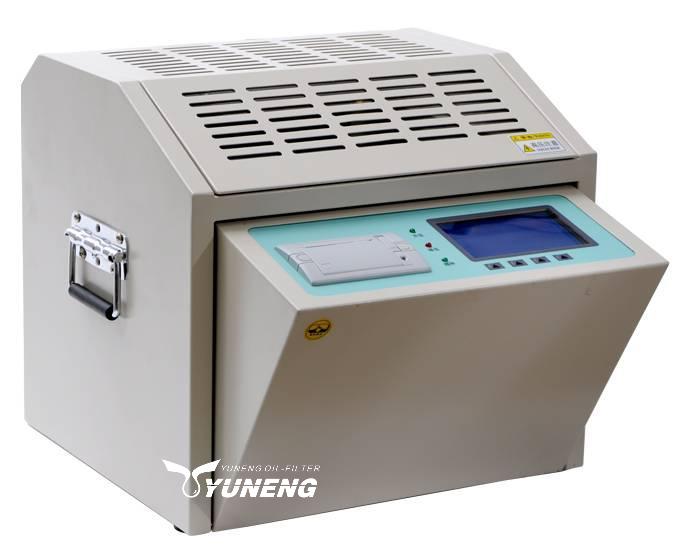
Determining the Need for Transformer Oil Purification and Replacement Standards
Based on the aforementioned test results, a comprehensive judgment can be made regarding whether transformer oil requires filtration or replacement. Generally, oil filtration may be necessary under the following conditions:
- Visual inspection reveals significant impurities or abnormal color.
- Moisture or acidity levels exceed specified ranges.
- Interfacial tension and dielectric dissipation factor do not meet the requirements.
- Flash point or breakdown voltage is below standard values.
Transformer oil replacement typically follows these criteria:
- Oil Aging: When the oil’s performance indicators such as acidity, interfacial tension, and dielectric dissipation factor cannot be restored to satisfactory levels after prolonged operation.
- Oil Contamination: When impurity levels in the oil exceed a certain limit, potentially leading to a decline in transformer performance.
- Decrease in Oil Quality: When key indicators such as flash point and breakdown voltage fall below specified values.
Maintenance and Economic Considerations
Maintenance of transformer oil must not only adhere to technical standards but also consider economic factors. Frequent oil replacements can increase operational costs. Therefore, as long as the oil can maintain the transformer’s normal operation, measures such as filtration can be employed to delay oil aging and reduce replacement frequency. However, it’s essential that filtration and maintenance tasks are carried out by professionals following strict operating procedures to ensure safety and oil quality.
Yuneng ZJA Double Stage Transformer Oil Filtration Machine
For better meeting the demands of transformer oil filtration, the recommendation goes to utilizing the Yuneng ZJA dual-stage transformer oil filtration machine. This unit incorporates advanced dual-stage vacuum separation technology, effectively eliminating moisture, gases, and impurities from the oil, significantly enhancing its quality. Additionally, it boasts user-friendly operation, stable performance, and easy maintenance, making it an ideal choice for improving transformer efficiency and prolonging oil lifespan.
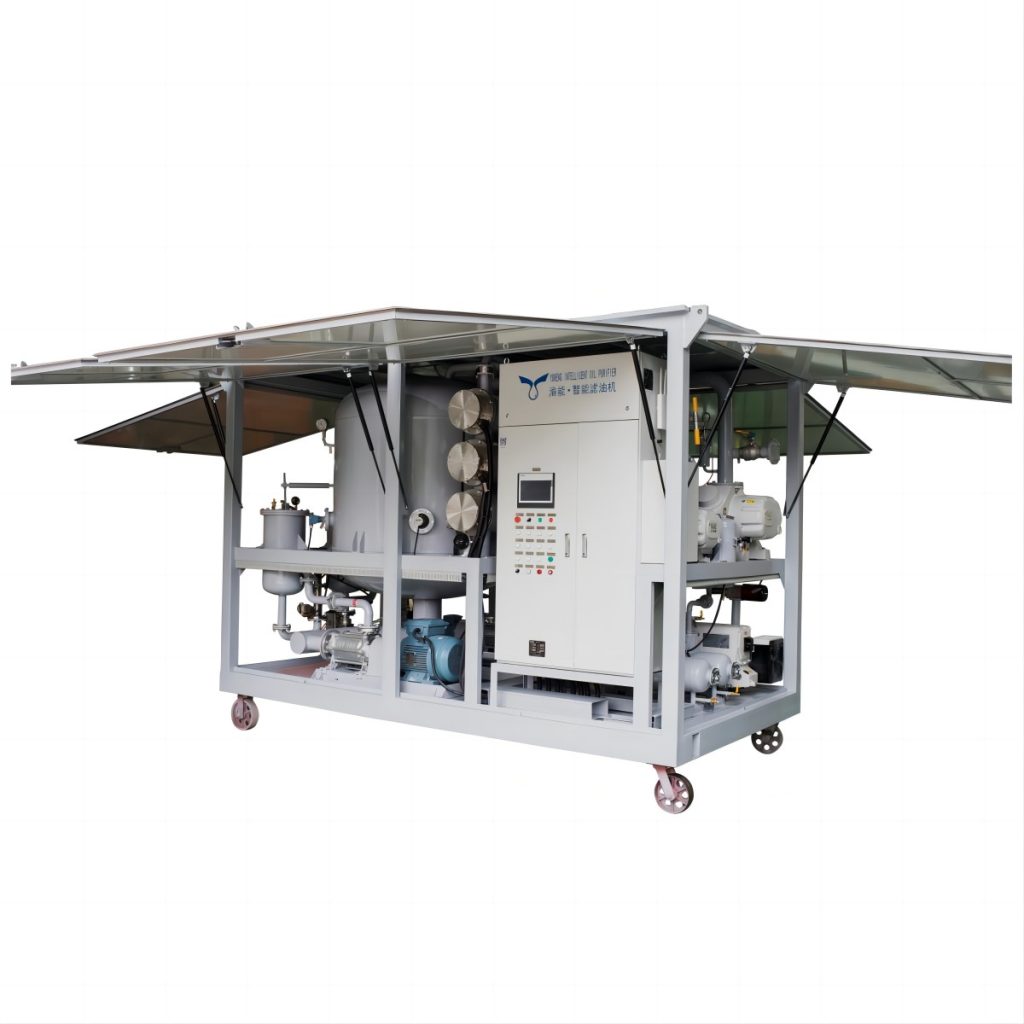
Key Features of the Yuneng ZJA Dual-Stage Transformer Oil Filtration Machine:
- Efficient Purification: Employing dual-stage vacuum separation technology, it achieves high removal rates, effectively reducing moisture, gas, and impurity content in the oil.
- Dual-Stage Vacuum Separation Technology: This technology consists of two vacuum pumps. The first-stage pump extracts the majority of moisture and gas from the oil, while the second-stage pump further removes residual minute moisture and gas, ensuring efficient purification of the oil.
- High Removal Rates: After processing through the YuNeng ZJA dual-stage transformer oil filtration machine, moisture content in the oil can be reduced to below 5~8ppm levels, gas content to below 0.1%~0.3% percentile levels, and the oil breakdown voltage up to 70~80kV.
- Safety and Reliability: It comes with comprehensive safety protection devices, ensuring safe and reliable equipment operation.
- Multiple Protections: Equipped with multiple safety protection devices, including over-voltage protection, over-current protection, phase loss protection, over-temperature protection, etc., ensuring trouble-free operation during equipment runtime.
- Stable Operation: The unit utilizes an advanced control system, automatically adjusting operational parameters to ensure stable equipment operation.
- Simple Operation: Featuring a user-friendly interface, the operation is straightforward and convenient.
- User-Friendly Interface: The Yuneng ZJA dual-stage transformer oil filtration machine adopts human-machine interface operation, with a clear and intuitive interface, allowing operators to follow prompts for easy operation.
- Simple and Easy to Learn: The operational steps of this unit are simple and easy to learn, even for inexperienced operators, facilitating quick mastery.
- Convenient Maintenance: With modular design, maintenance personnel can easily perform maintenance and servicing.
- Modular Design: The YuNeng ZJA dual-stage transformer oil filtration machine adopts a modular design, with convenient disassembly and assembly of various components, enabling maintenance personnel to easily carry out upkeep.
- Long Maintenance Cycle: This unit has a long maintenance cycle, typically requiring maintenance every six months under normal circumstances.
Applications of the Yuneng ZJA Dual-Stage Transformer Oil Filtration Machine:
The Yuneng ZJA dual-stage transformer oil filtration machine is suitable for filtering oil in various electrical equipment such as power transformers, reactors, and capacitors. It effectively removes moisture, gases, and impurities from the oil, enhancing oil quality, extending its lifespan, and reducing equipment operation and maintenance costs.
The Yuneng ZJA dual-stage transformer oil filtration machine is the ideal choice for improving transformer efficiency and extending oil lifespan.
If you’re seeking an efficient, reliable, user-friendly, and easy-to-maintain transformer oil filtration machine, then the Yuneng ZJA dual-stage transformer oil filtration machine is your best choice.

